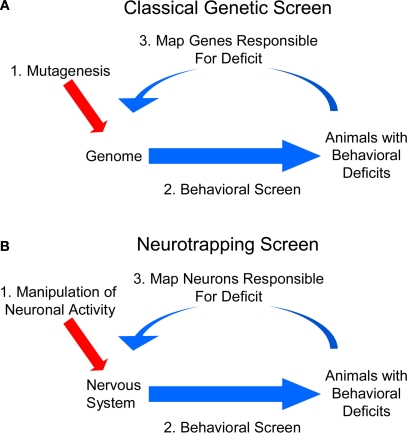Figure 1.
Neurotrapping screens are analogous to genetic screens. (A) In a genetic screen, perturbations are introduced into the genome by mutagenesis, and animals bearing these mutations are analyzed for deficits in a behavior of interest. These heritable deficits are then traced back to the change(s) in the genetic material that are their source. (B) In a neurotrapping screen the activity of neurons, rather than genes, is perturbed. This type of screen requires genetic tools such as those listed in Table 1 for manipulating neuronal activity, and a means of targeting these tools to particular neurons. Unlike traditional methods of circuit-mapping, neurotrapping identifies the functional components of a neural network without knowledge of synaptic connectivity (which often represents only part of a neuron's signaling capacity) or response properties (which may only coincidentally correlate with performance of a particular behavior).

